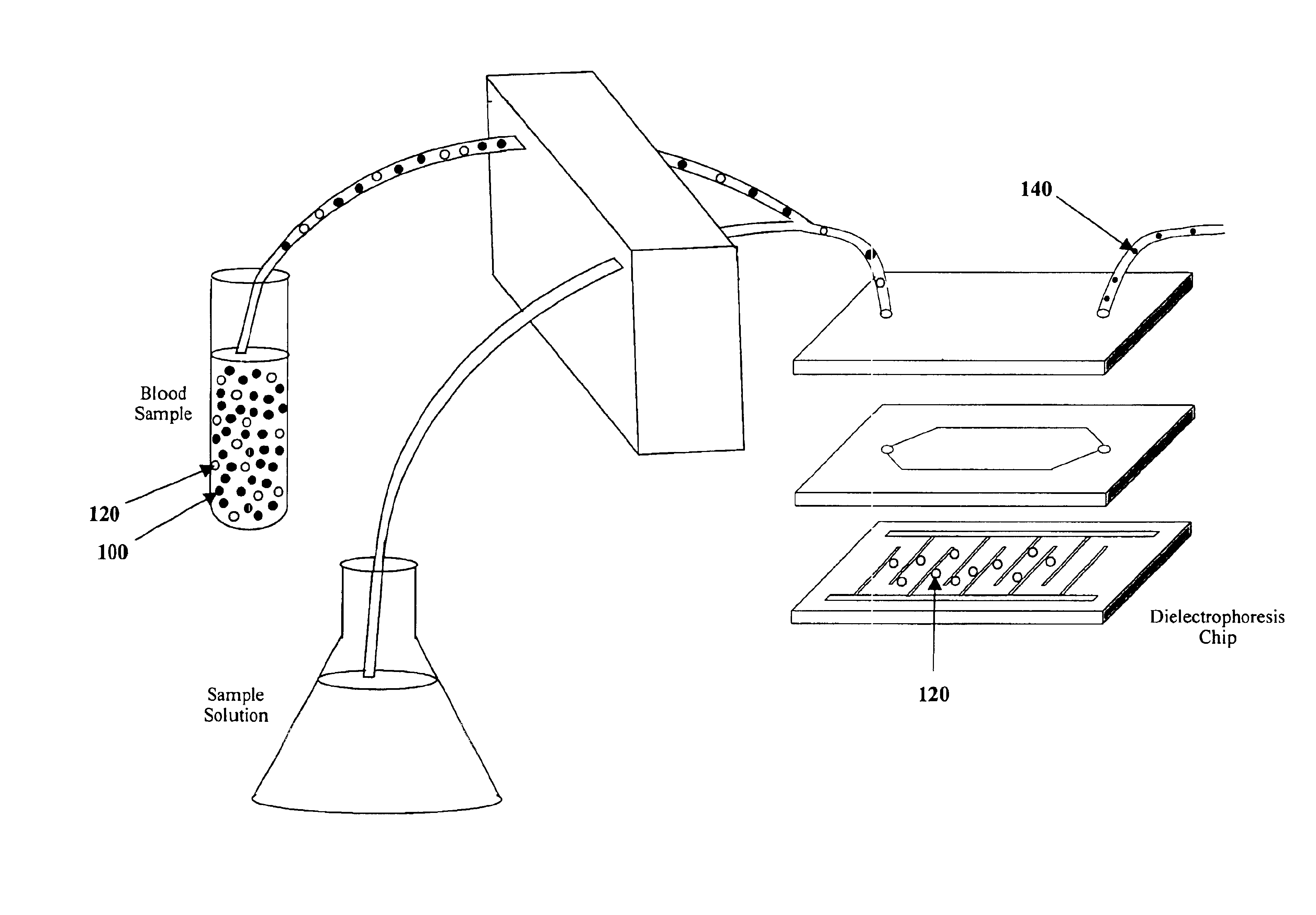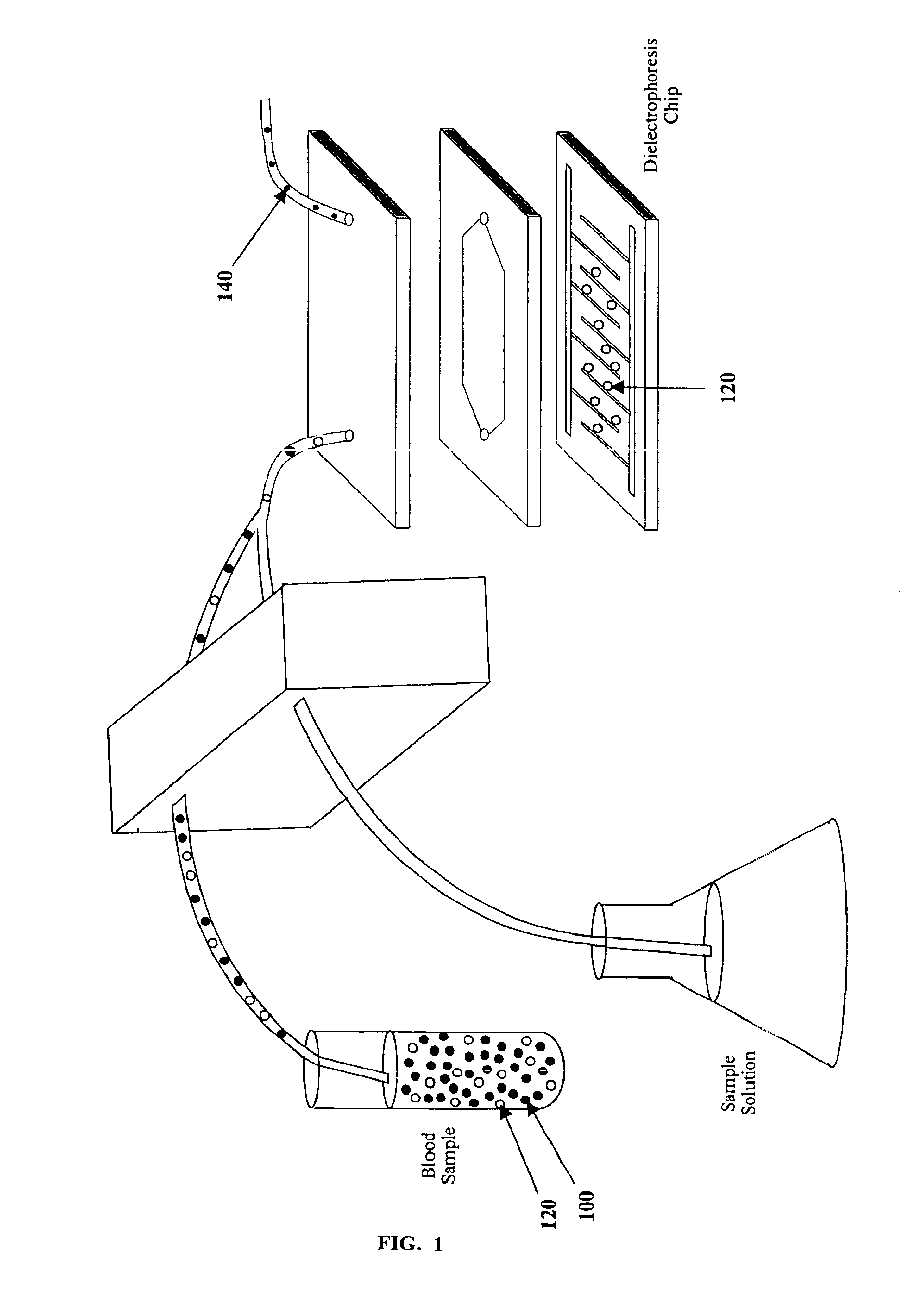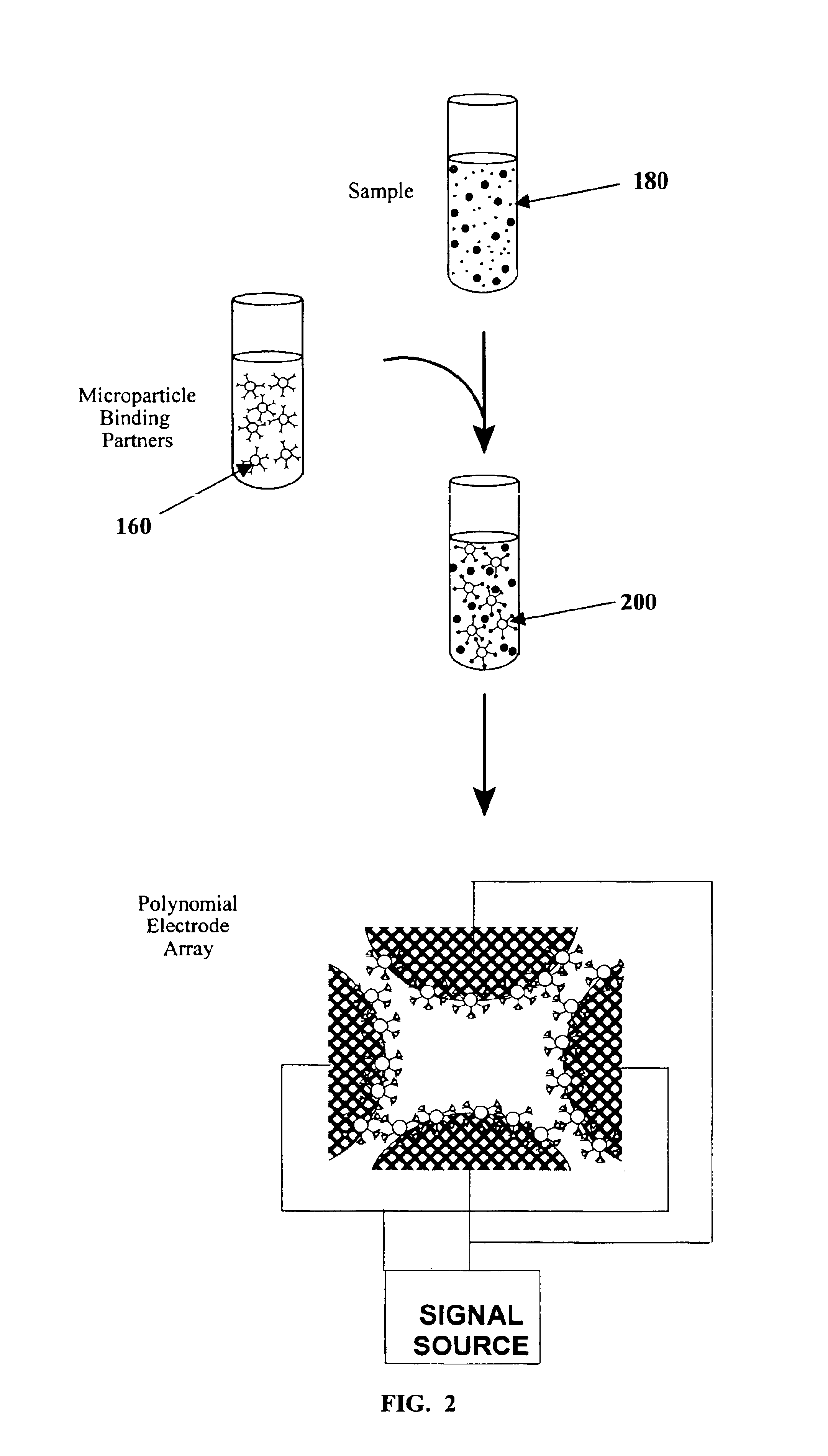Compositions and methods for separation of moieties on chips
- Summary
- Abstract
- Description
- Claims
- Application Information
AI Technical Summary
Benefits of technology
Problems solved by technology
Method used
Image
Examples
example 1
Assays of Sample Solutions that Selectively Lyse Red Blood Cells
The following solutions were tested for the selective lysis of red blood cells.
(1.1)
TABLE 1Whole human blood is mixed with 2% (weight to weight) sucrosebuffer (approximately 60 mOsm) at a ratio of 1:19. The intact whiteblood cells (WBC) and red blood cells (RBC) are counted undermicroscope at various time instants after mixing blood with thesucrose buffer. As evidenced on the Table 1, 2% sucrose solution maybe used as the sample solution of the present invention.Detection Time (minutes)WBC (cells / ml)RBC (cells / ml)21.6 × 1053.0 × 10551.2 × 1052.4 × 105101.1 × 1052.0 × 105151.0 × 1052.0 × 105200.8 × 1051.9 × 105300.8 × 1051.8 × 105
(1.2)
TABLE 2Whole human blood is mixed with 2.2% (weight to weight) sucrosebuffer (approximately 66 mOsm) at a ratio of 1:19. The intact whiteblood cells (WBC) and red blood cells (RBC) are counted undermicroscope at various time instants after mixing the blood with thesucrose buffer. As evidenc...
example 2
Dielectrophoretic Separation of White Blood Cells on a Chip Using Low Conductivity Solutions and Dielectrophoretic Migration and Retention
Whole human blood was mixed with a sample solution of 2.0% sucrose at a ratio of 1:19. Forty microliters of the mixture was introduced by micropipet into a chamber having a volume of 40 microliters. The number of white blood cells in 40 microliters (i.e. in 2 microliter of blood) of the mixture was 10-20×103 cells. The chamber comprised a glass chip. The chip had an interdigitated gold / titanium electrode array, with electrodes having a characteristic dimension (i.e. electrode width, tip width, the distance between the neighbouring electrode edges) of 50 microns. An electric signal source (Hewlett Packard) was turned on to generate an electric field of 5 MHz at 5V peak-to-peak. White blood cells were collected at the electrode edges. Debris from lysed red blood cells were levitated above the electrode plane by negative dielectrophoresis and removed...
example 3
Dielectrophoretic Separation of White Blood Cells on a Chip Using a Solution that Selectively Lyses Red Blood Cells and Dielectrophoretic Retention
Whole human blood was mixed with a sample solution of 2.0% sucrose at a ratio of 1:19. The mixture was incubated for five minutes at room temperature to allow for the lysis of red blood cells. The sample-sample solution mixture was dispensed onto a dielectrophoresis chip comprising interdigitated gold / titanium electrodes on a glass surface. The electrodes had a characteristic dimension (i.e. electrode width, tip width, the distance between the neighnbouring electrode edges) of 50 microns. A Hewlett Packard electric power source was turned on to generate an electric field of 5 MHz at 5 V peak-to-peak. White blood cells were collected at the electrode edges. The remaining sample-sample solution mixture was removed from the chamber with a pipette without touching the collected white blood cells. Collected white blood cells were harvested by ...
PUM
| Property | Measurement | Unit |
|---|---|---|
| Fraction | aaaaa | aaaaa |
| Fraction | aaaaa | aaaaa |
| Fraction | aaaaa | aaaaa |
Abstract
Description
Claims
Application Information
 Login to View More
Login to View More - R&D
- Intellectual Property
- Life Sciences
- Materials
- Tech Scout
- Unparalleled Data Quality
- Higher Quality Content
- 60% Fewer Hallucinations
Browse by: Latest US Patents, China's latest patents, Technical Efficacy Thesaurus, Application Domain, Technology Topic, Popular Technical Reports.
© 2025 PatSnap. All rights reserved.Legal|Privacy policy|Modern Slavery Act Transparency Statement|Sitemap|About US| Contact US: help@patsnap.com



